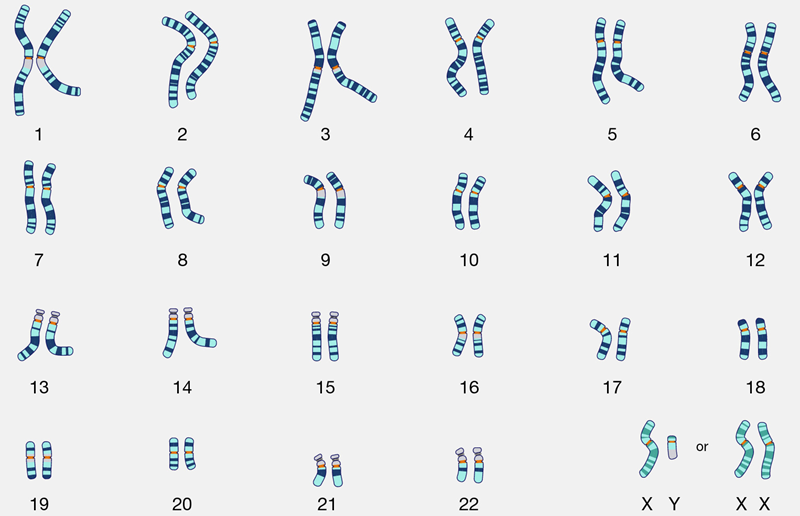
In this activity, you will use a computer model to look at chromosomes and prepare a karyotype. You will diagnose patients for abnormalities and learn the correct notation for characterizing karyotypes.

Click on Karyotyping under human biology and read the Introduction page:
1. What causes a dark band on the chromosome?
2. What is a centromere?
Patient Histories: *Click on Patient Histories. You will be completing a karyotype for Patient A, B & C
*Match the chromosome to its homolog. After all the matches are complete you'll analyze your patient. (Scroll down to view your completed karyotype).
3. What is patient A's history (summarize)
4. How many total chromosomes are in your karyotype - count them
The last set of chromosomes is the sex chromosomes, if you have two large chromosomes, your patient is XX (female), one large and one small indicates and XY (male) . What sex chromosomes does your patient have
Which chromosome set has an extra +
5. What diagnosis would you give this patient (what disease)?
6. What is Patient B's history (summarize)
7. How many total chromosomes are in your karyotype - count them
What sex chromosomes does your patient have
Which chromosome set has an extra +
8. Finish the notation for this patient's karyotype : 47 X
9. What is the diagnosis?
10. What is patient C's history (summarize)?
11. How many total chromosomes are in your karyotype - count them
What sex chromosomes does your patient have
Which chromosome set has an extra +
12. Write out the correct notation for this karyotype.
13. What is the diagnosis?
How to Interpret a Karyotype – examines images of human karyotypes to identify disorders
Chromosome Study – cut out chromosomes and tape them in pairs to construct a “paper” karyotype
This work is licensed under a Creative Commons Attribution-NonCommercial-ShareAlike 4.0 International License.